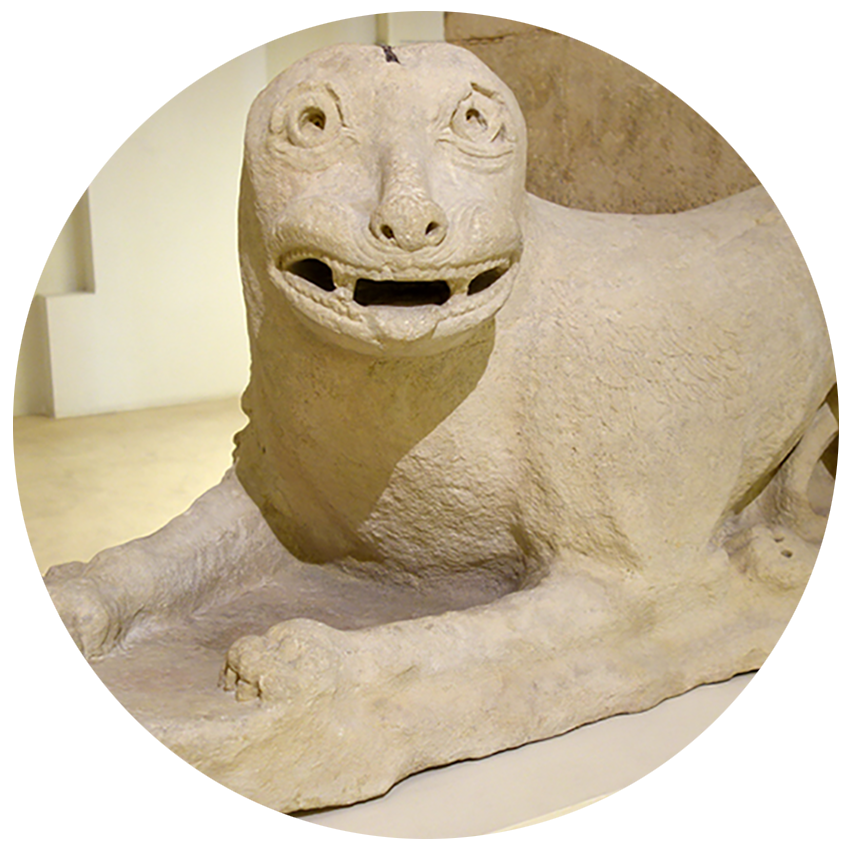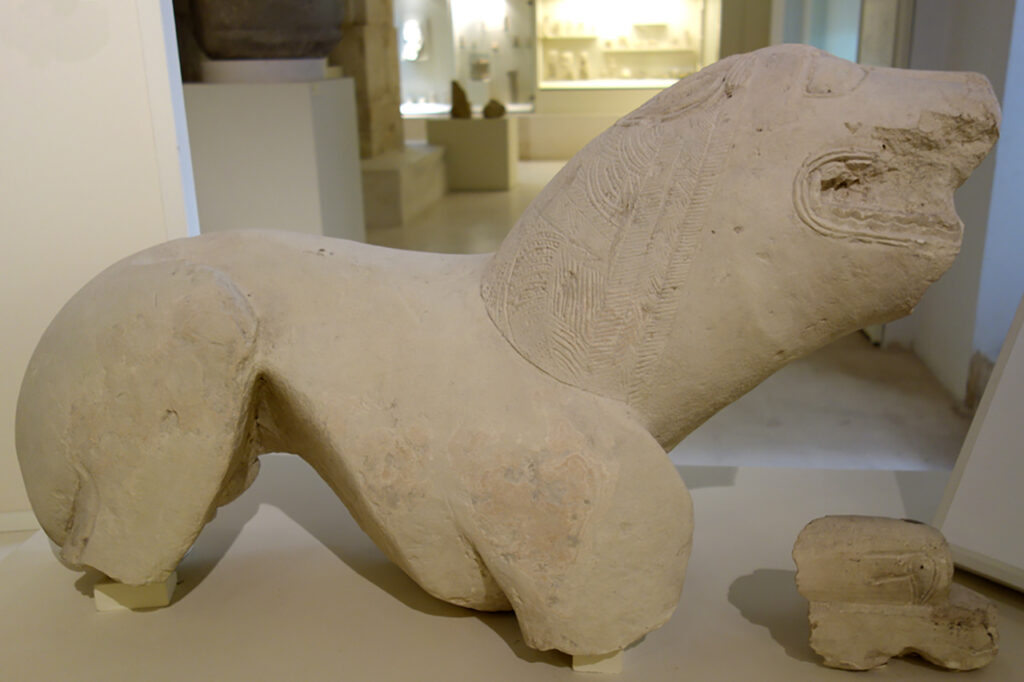
Room I. From the Paleolithic to the Iberian Culture
The first room of the Historical Museum of Baena, dedicated to the owner of the land now occupied by the Torreparedones archaeological park, Antonia León Castro, has at its beginning a map where the main archaeological sites of the municipal area are located and a panel summary of Baenense history. Next to them, a showcase with a set of fossils presents us with a sample of paleontology in which an exceptionally large ammonite from the Luque district stands out.
To the left we find the showcases dedicated to prehistory with interesting examples of lithic industry, arrowheads, loom weights, hand mills and even a piece of fossilized skull. All this as a compendium of a wide stage that covers from the Paleolithic to the Metal Age and that serves as a preamble to the Iberian Culture that will be the most prominent in the Room. In this way, the following showcases show us the characteristic ceramics decorated with concentric circles in red color, fusayolas and metallic elements such as fibulas, pruning shears, soliferreum or iron spears, ferrules and other pieces of interest related to this period. However, it will be the zoomorphic sculptures those that focus the visitor’s attention, when verifying that the Baena Museum has one of the largest collections of this genre, some original and others, also found in the municipality, reproduced since they are exhibited in other museum spaces, including the National Archaeological Site, where together with the Lady of Elche and the Lady of Baza, is the Leona de Baena, discovered on the Minguillar hill where the ancient city of Iponuba was located.
A new showcase in which funerary urns, plates and skylights are exhibited, takes us into the cultic area of the room where in the first place we have the sacred column or betilo, with its corresponding capital, which was discovered in the excavations of the Sanctuary of Torreparedones. . Next to it is a reproduction of what is known as the Offering Stela, from the same archaeological site, which is exhibited in the Cañete de las Torres museum and represents some ladies carrying a goblet vase as an offering, in what is interpreted could be the access portico to the aforementioned sanctuary. Juno Lucina or Dea Caelestis, a divinity associated with the Punic Tanit, was worshipped there and the fruit of this cult are the numerous votive offerings shown in the following showcases. These are anthropomorphic figures (usually pregnant women) and anatomical representations of legs and feet interpreted as a way of thanking the divinity for a successful delivery or the healing of a sick member. An ex-voto with the figure of an equine is also on display which, together with others recently discovered, indicates the existence in Torreparedones of a new sanctuary dedicated to a deity that protects horses. Limestone burners and altars and two large capitals from the 4th century B.C. complete the space dedicated to the Iberian world. A space that we will leave through the door that leads to the main patio of the building, but not before contemplating a showcase that shows what could be considered a preview of the great numismatic collection that is exhibited in Room IV of the Museum. Coins from different periods of antiquity place us in nearby cities such as Obulco, in present-day Porcuna (Jaén), and in more distant ones such as Tarraco (Tarragona) or the current city of Mérida, the Emérita Augusta from Roman times.

Zoomorphic sculptures in room I of the Museum.

Iberian lion of the Minguillar hill.
Iberian zoomorphic sculptures
In the south of Córdoba, numerous zoomorphic sculptures have been discovered that mostly represent lionesses. Their number is especially relevant in Baena where up to 15 specimens have been catalogued, of which six correspond to the Minguillar hill and three to Los Molinillos. Distributed by the National Archaeological Museum, the Historical Museum of Baena and the Íbero de Jaén, these sculptures are associated with funerary monuments of the Iberian elites although, given their abundance, it is even suggested that they could be a kind of emblem with which the limits of this territory.
Lions are the most represented figures in the Iberian zoomorphic, followed by bulls, although to a lesser extent. Deer, horses, and wolves have also been documented. In total 26 pieces of this type, being the Historical Museum of Baena the place where a greater number of them are exhibited.
The Sanctuary of Torreparedones
Iberian religiosity is widely manifested in the Sanctuary of Torreparedones, a well-documented sacred space thanks to the archaeological interventions carried out. The same ones that have allowed carrying out the recreation that is shown next to these lines.